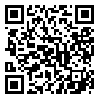BibTeX | RIS | EndNote | Medlars | ProCite | Reference Manager | RefWorks
Send citation to:
URL: http://hakim.tums.ac.ir/article-1-2299-en.html

 , Sahand Riazi-Isfahani2
, Sahand Riazi-Isfahani2 
 , Maryam Rezaei1
, Maryam Rezaei1 
 , Elham Abdalmaleki1
, Elham Abdalmaleki1 
 , Sara Saffarpour3
, Sara Saffarpour3 
 , Zhaleh Abdi4
, Zhaleh Abdi4 
 , Ali Akbari Sari5
, Ali Akbari Sari5 
 , Elham Ahmadnezhad *6
, Elham Ahmadnezhad *6 

2- Community Medicine Specialist, Assistant Professor, Health System Observatory Secretariate, National Institute of Health, Tehran, Iran.
3- MS in Food Science engineering, Health System Observatory Secretariate, National Institute of Health Research, Tehran University of Medical Sciences, Tehran, Iran.
4- PHD in Healthcare Management, Associate Professor, National Institute of Health Research, Tehran University of Medical, Tehran, Iran.
5- PHD in Health Policy and Management, Professor, Department of Health Management and Economics, School of Public Health, Tehran University of Medical Sciences, Tehran, Iran.
6- PhD in Epidemiology, Professor, Health System Observatory Secretariate, National Institute of Health Research, Tehran University of Medical Sciences, Tehran, Iran. ,
Introduction: Financial protection against the health expenditures is one of the important dimensions of Universal Health Coverage (UHC) and a major goals of health systems. Monitoring and tracking indicators related to it are of great importance for policymakers. The aim of this study is to examine the eleven-year trend in households’ exposure to Catastrophic Health Expenditures (CHE) and Impoverishing Health Expenditures (IHE).
Methods: This study is a secondary analysis on the 2011 to 2023 data from the national household income expenditure survey, obtained from the Statistical Center of Iran. The trend in households’ exposure to CHE and IHE was analyzed by type of service, the expenditure quintile and the place of residence.
Results: The proportion of households exposed to CHE (health expenditures exceeding 25% of total household expenditure) increased from 3.10% in 2011 to 2.85% in 2023. In urban and rural households, this proportion changed from 3.01% and 3.30% to 2.55% and 3.86%, and in poorest and richest quintiles from 1.28% and 6.31% to 1.99% and 5.14% respectively. The proportion of households exposed to IHE increased from 0.60% in 2011 to 0.80% in 2023. This proportion in urban and rural households reached from 0.32% and 1.29% to 0.40% and 2.11% respectively.
Conclusion: The increasing trend of financial hardship among the poorest quintile in Iran will significantly hinders the achievement of UHC, suggesting the necessity of more serious interventions.
Received: 2025/04/6 | Accepted: 2023/06/19 | Published: 2023/06/19
| Rights and permissions | |
 |
This work is licensed under a Creative Commons Attribution-NonCommercial 4.0 International License. |



